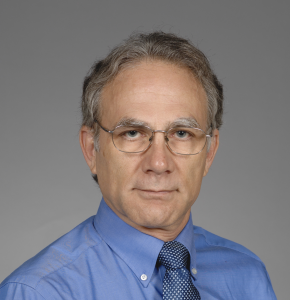Paul D. GaderIEEE Fellow Education | Professional Experience | Biosketch | Tutorials | NEON Data Skills | Departments | CV | Supervised Dissertations and Theses |
 |
Education
Ph.D. in Mathematics University of Florida, August 1986.
Dissertation: Image Algebra Techniques for Parallel Computation of Discrete Fourier and General Linear Transforms
M.S. in Mathematics, University of Florida, May 1983.
B.S. in Mathematics, University of Central Florida, August 1981, magna cum laude.
Professional Experience
|
2003-Present |
Professor, Computer & Information Science & Engineering, University of Florida. |
|
2016-Present |
Affiliate Professor, Environmental Engineering Sciences, University of Florida |
|
08/15-06/15 |
Visiting Professor, Computer Science, University of California, Santa Barbara |
|
05/12 – 05/15 |
Chair, Computer & Information Science & Engineering, University of Florida |
|
2001-2003 |
Assoc. Professor, Computer & Information Science & Engineering, University of Florida. |
|
1991-2001 |
Assistant / Associate / Full Professor of Computer Engineering and Computer Science, (formerly Electrical and Computer Engineering), University of Missouri-Columbia. |
|
1994 |
Summer Research Fellow, Image Processing Laboratory, Eglin AFB FL. |
|
1991-1997 |
Consultant, Environmental Research Institute of Michigan (ERIM). |
|
1989-1991 |
Section Head & Research Engineer, Image & Pattern Analysis Section, ERIM. |
|
1988 |
Summer Research Fellow, Institute for Mathematics and Its Applications, Summer Program on Signal Processing, University of Minnesota. |
|
1987-1988 |
Assistant Professor of Mathematics, University of Wisconsin-Oshkosh. |
|
1986-1988 |
Senior Research Scientist, Machine Vision Technology Section, Honeywell Systems and Research Center. |
|
1986-1988 |
Honorary Fellow, Department of Mathematics, University of Wisconsin-Madison. |
|
1986 |
Visiting Assistant Professor of Mathematics, University of Wisconsin-Oshkosh. |
|
1984-1986 |
Graduate Research Assistant, Computer and Information Science Department, University of Florida. |
|
1984 |
Summer Research Fellow, Image Processing Laboratory, Eglin AFB, FL. |
|
1981-1984 |
Graduate Teaching Assistant, Department of Mathematics, University of Florida. |
Biosketch
Paul Gader’s research has ranged from Mathematics to operational Machine Learning algorithms beginning with the development of algorithms for detecting bridges in FLIR imagery in 1984. He received a Ph.D. in Math in 1986 at the University of Florida for parallelizing image processing algorithms. He has been a Senior Research Scientist at Honeywell’s Systems and Research Center; Research Engineer and Manager at the Environmental Research Institute of Michigan (ERIM); and on the faculties of the Universities of Wisconson-Oshkosh, Missouri (ECE, CS), and Florida (CISE, EESIE). He has also been a Visiting Professor at the Grenoble Institute of Technology in France and at the University of California – Santa Barbara (CS, Viper Lab).
He has been a leading figure in handwriting recognition and landmine detection. He led the development of a 5th ranked handwritten character recognizer and a top ranked handwritten word recognizer in two National Institute of Standards and Technology (NIST) competitions in the early 1990s. He led teams that devised and implemented Hidden Markov Model and Possibilistic detectors in real-time on a Husky-Mounted Mine Detection System fielded in Afghanistan in 2008. The systems with his team’s algorithms are featured in a National Geographic Television program: “Bomb Hunters: Afghanistan”.
NIST – The First Census Optical Character Recognition Conference, 1993 (I contributed to the ERIM systems)
NIST – The Second Census Optical Character Recognition Conference, 1993 (I contributed to the ERIM systems)
Bomb Hunters Afghanistan (It’s called the Husky. Watch from minute 6:00)
He has been researching hyperspectral algorithms, or algorithms for imaging spectroscopy, since 2002, initially working on land-mine detection using LWIR hyperspectral; planning and conducting multiple VIS/NIR/SWIR and LiDAR airborne data collections. His research has focused on unmixing, dimensionality reduction, material detection, and classification, using both physics-based and data driven nonlinear models. He was general chair of the Workshop on Hyperspectral Image and Signal Processing in June 2013. He has prepared and given tutorials on nonlinear unmixing for imaging spectroscopy at International Conferences, and taught a short course on hyperspectral classification at the National Ecological Observation Network (NEON) Science Inc. Data Skills workshop.
Dr. Gader has published over 100 journal and over 300 total papers, was an Associate Editor of IEEE Geoscience & Remote Sensing Letters, led an adhoc committee on Standardized Algorithms, Data, & Evaluation (SADE), enjoyed a three-year term as a UF Research Foundation Professor and is a Fellow of the IEEE.
Tutorials
Nonlinear Unmixing of Hyperspectral Data
Nonlinear Unmixing for Imaging Spectroscopy
NEON Data Skills
Classification of Hyperspectral Data with Ordinary Least Squares in Python
Classification of Hyperspectral Data with Principal Components Analysis in Python
Using SciKit for Support Vector Machine (SVM) Classification with Python